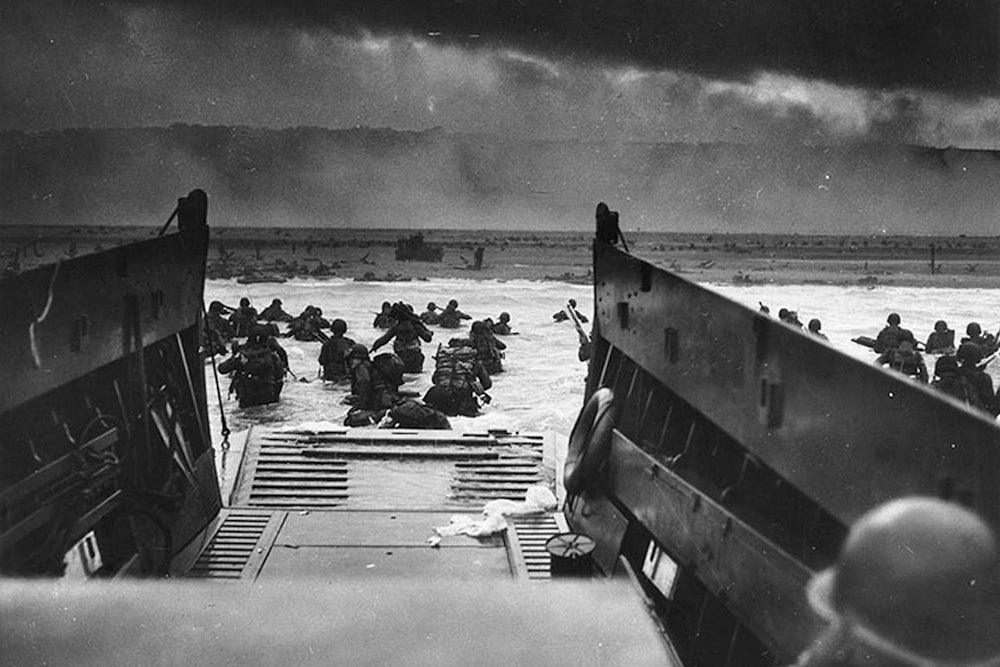The landings on the Normandy coast are still a limited operation. It is an operation limited, first in space: as these lines are written, the Allied beachhead is hardly more than fifty miles long. It is also limited in the size of the forces participating—only the first echelon of the great invasion army has been thrown into battle. General Eisenhower still has a tremendous amount of power in the British Isles. The operation is limited, too, in military objectives. The United States-British blows now are aimed neither at the destruction of major German forces nor at the seizure of decisive centers of German defense on the Continent. Our troops are now fighting to conquer the marshaling ground necessary for the deployment in depth of forces adequate for further attack.
The new battle of France is still in its preliminary phase. Yet even the first echelon of invasion is a lever destined to overturn the whole strategic situation in Europe. The starting of the invasion is already a definite commitment; it cannot be canceled or suspended. It opens a new dynamics of the war.
Without doubt, the situation on the Western front is more critical for the anti-Hitler coalition than on the fronts elsewhere in Europe. In the East, the Red Army has clear superiority; in Italy the greater strength of British-American weapons has been proved by the victories of the last five weeks. But on French soil it is the Wehrmacht that has numerical superiority against the first wave of invading troops. It has the further advantage of supply bases on the Continent. In this phase of the battle the Anglo-American troops are attacking with weaker forces and must rely on local superiority only, at chosen points. Moreover, they must crush the powerful defensive installations of the enemy. On the Eastern front and in Italy the Red Army and the Anglo-American troops have only offensive tasks before them; there German strategy is bound to the defensive. In the West, however, the Wehrmacht will launch strong counter-offensives. In this phase of the campaign here the American and British forces will have to wage combined offensive-defensive battles.
In the West there will arise military emergencies which must be met by quick actions of complicated strategic design. It should not be hard to compensate effectively for German numerical superiority on French soil. The Allies have in their main base in the British Isles power superior to the German forces in all of Western Europe. The final preponderance of the Allied weapons is unquestionable, but the temporary German surplus of power must be neutralized.
The general solution consists, of course, in bringing a maximum of Allied power to the Continent in the shortest possible time. The beachhead in Normandy must be strengthened and transformed into an armed camp and a springboard for further offensives. But best for the defensive in the West are new offensives. The first week of the invasion has proved a military fact of tremendous importance: We can land. Pouring of almost unlimited forces into the French theatre of war is possible. This is not a problem of transport and supply, only, but the design of the battle.
The beachhead in Normandy must be relieved by new offensive operations, by new sectors of invasion. In the West, too, there will be a “war of many fronts,” that is to say in the space between the Bay of Biscay and the Danish coasts, many battle sectors must be combined, each supporting and strengthening the others. It is necessary both to tie up and to disperse German reserves in the West by simultaneous blows. The invasion can succeed only as an all-out offensive, In the West, concentration of power is possible only through battle, for there the deployment of forces requires the extension of front lines and the establishing of new sectors.
The “war on many fronts” in the West may become a military reality in the sense that the Allied High Command will have to coordinate many disconnected sectors into one major action. But the Western front will profit especially from the great all-European strategy of war on many fronts. The Italian campaign and the battle of Normandy are only a prelude to the Battle of Europe which will develop this summer. At mid-June no more than perhaps 1o percent of those forces which will enter into action in the East, West and South this summer have as yet participated in actual fighting. The greatest relief and support to the Western front will be brought by the coming Red Army offensive; and conversely the Russian offensive will now, for the first time, be furthered by the genuine, the big second front.
The first week of the invasion has already refuted two main German strategic ideas: that of protracted war and that of the impenetrability of German defense. With the start of total war against Germany, with an offensive in the West which can only be an all-out offensive, the pace of the war has changed. Hitler cannot prolong the war at his will. In this phase of the fighting, protracted war is a German conception and a German hope. Our principles now are dynamic war, war of movement, quick victory. On the other hand, the breaching of the Atlantic wall is the symbolic blow against the conception of the German absolute defense, committed to hold at any price the outer border of Europe. The German High Command has no strategic variation in store to fight against deep Anglo-American-Russian penetrations into Europe.
